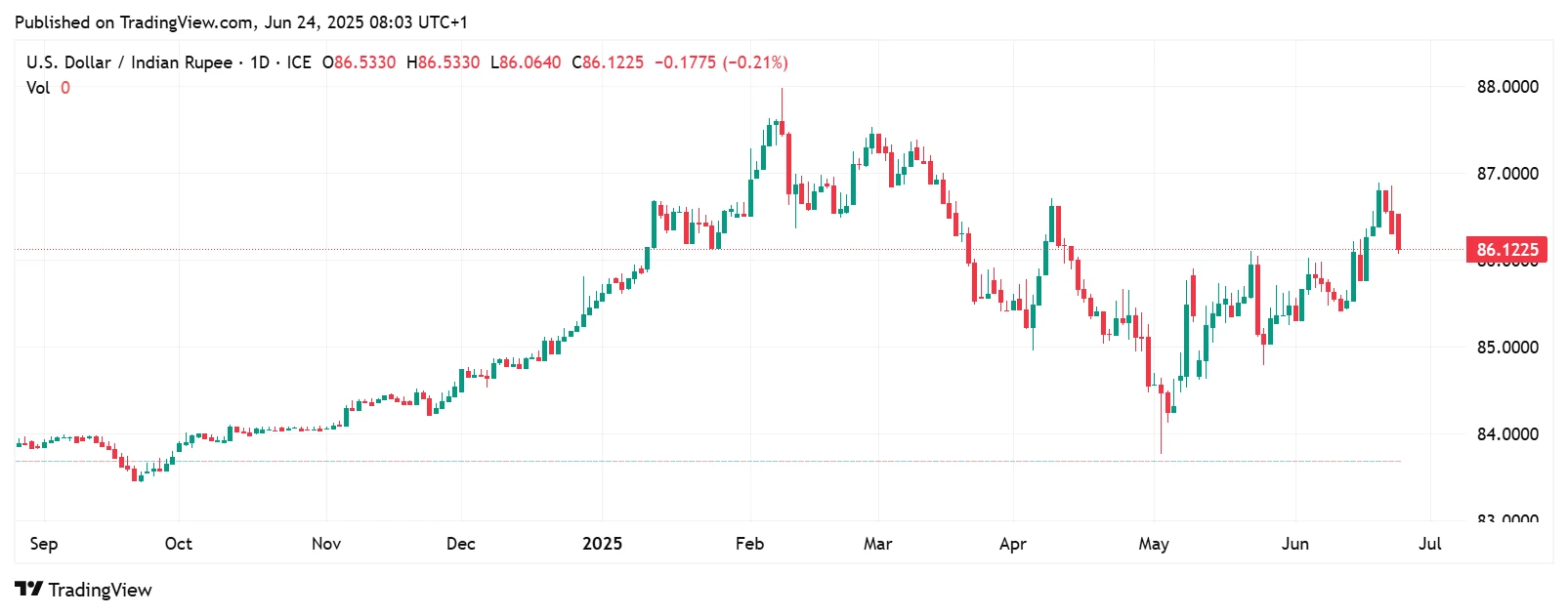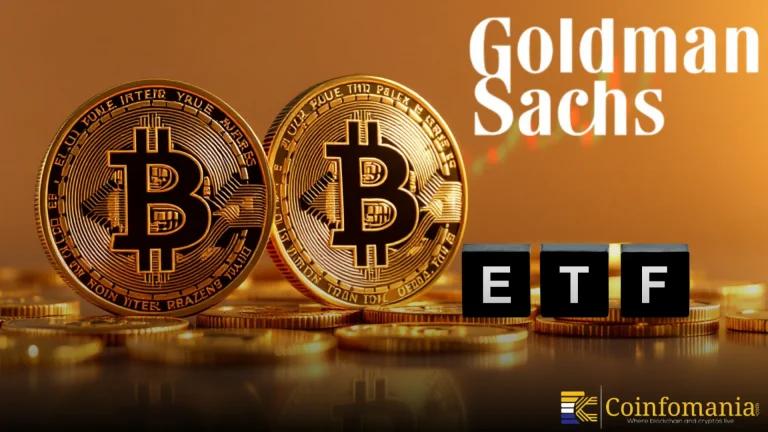India’s Stock Market and Rupee React Positively to Falling Oil Prices
Indian Rupee strengthens to 86.13 INR/USD, while Indian stocks gain 1% after Israel-Iran ceasefire and falling oil prices.

Quick Take
Summary is AI generated, newsroom reviewed.
The Indian Rupee rebounded by 65 paise to 86.13 INR/USD, driven by falling oil prices and geopolitical stabilization.
The Indian stock market saw a 1% rise, boosted by easing geopolitical tensions and reduced oil prices.
Oil marketing companies benefited, while upstream oil firms like ONGC and Oil India faced losses due to falling oil prices.
The Indian rupee (INR) gained 65 paise on 24 June to trade at 86.13 per US dollar (USD), and this marked a profound recovery for the Indian rupee. This appreciation of the rupee was due to two important factors. They include a sudden dip in the international prices of crude oil and a ceasefire by US President Donald Trump between Israel and Iran, which had preceded 12 days of battling. The news served to calm the concerns of the investors, giving a boost to sentiments in Indian financial markets.

The markets hailed the recovery of the Indian rupee as it relieved some of the inflationary pressure that surrounded the increased cost of importing oil. The higher the rupee value, the better it is to ease the import bill. Moreover, it has a lesser impact on high oil prices that affect local inflation, considering that India, as a country, depends on imports of crude oil. The Indian economy has been boosted by the decline of crude oil prices as the markets continue experiencing a fall of more than 2%. However, the current best prices of the commodities are at 69.88 dollars per barrel.
Indian Stock Market Rebounds with a 1% Gain
The equity indices in India also indicated upside performance on the same day. The Nifty 50 and BSE Sensex gained nearly 1%. Additionally, they were at their strongest levels since early in October. At 10.24 AM IST, the Nifty 50 was at 25,225.85 points, whereas the BSE Sensex was at 82,743.91 points. This bullish attitude in the market was mainly caused by the reduction in geopolitical tensions in the region after the ceasefire. Furthermore, the fact that the oil prices fell (this is a positive situation for India, which is a large consumer of oil).
Oil marketing firms, including Indian Oil Corporation (IOC), Bharat Petroleum Corporation (BPCL), and InterGlobe Aviation, rose 2.9%, 3.1%, and 3.7%, respectively. Conversely, the upstream oil shares such as ONGC and Oil India were down as the drop in oil prices was negatively related to the profitability of the oil drillers. Other segments of the market, such as mid-cap and small-cap stocks, came along, and the general increase in the market was about 0.8%.
The Geopolitical Ramification: Cessation of War between Israel and Iran
The truce between Israel and Iran, mediated by US President Donald Trump, carried strong geopolitical setbacks. Further, the conflict in the Middle East with Tehran was avoided. This declaration came after a 12-day feud, where the oil prices had reached the five-month highs on concerns that the market had of any additional escalation. The markets welcomed this eclipse of the crisis with optimism as the traders are adjusting their expectations about the price of oil.
The fall in oil prices is great news to India too because it is energy-dependent on imports. When oil prices drop, it decreases inflationary prospects, giving the Indian government some time when it comes to controlling its fiscal deficit. With oil prices falling by more than 2% to 69.88 dollars per barrel, the Indian rupee gained even more. The country is improving in its trade balance as well as the availability of money outside the country.
Oil Prices, the Indian Rupee, and Global Trade
Although the market today is optimistic due to the ceasefire and decline in oil prices, the parameter that will determine how long the success can last is contingent on many variables. The nature of the global oil prices, the geopolitical tensions, and the changing trade policies of all the other leading economies. Most importantly, the US is likely to go on to form a significant portion of India’s economic prospects. This can be true according to VK Vijayakumar, Chief Investment Strategist at Geojit Investments, who mentioned that there might be other issues should the global trade policies create more uncertainty or inflation in the market.
Follow us on Google News
Get the latest crypto insights and updates.
Related Posts

Goldman Sachs Buys $1.7 Billion in Bitcoin ETFs, Signaling a Major Wall Street Shift
Vandit Grover
Author

Cardano clears a critical governance hurdle with renewed on-chain authority
Vandit Grover
Author

Coinbase Lawsuit Sparks High-Stakes Battle Over Prediction Market Regulation
Vandit Grover
Author